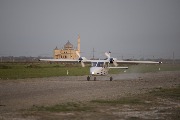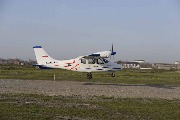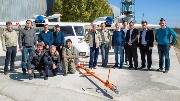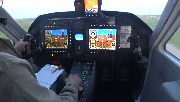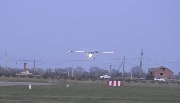First flight of MAI-411 four-seat plane
The MAI-411 plane made its first flight on April 12, 2018. This light multi-purpose plane was designed in the Moscow Aviation Institute design bureau.
The work on the airplane has been carried out since August 2015 in the framework of an integrated project of PRO-Avia Company and the Kizlyar Elektromechanical Plant Concern KEMZ, funded by the Foundation for Assistance to Small Innovative Enterprises (FASIE).
The airplane prototype was manufactured on two platforms:
· OSKBES MAI Design Bureau Production Center
· the KEMZ Kizlyar Electromechanical Plant Concern– partner of OSKBES MAI for over 25 years. Since the 1990s, apart from work on the State Defense Order, it has manufactured the MAI-890 airplanes designed by OSKBES MAI, the T-2 trikes designed by the Antonov experimental design bureau, as well as the “Pchela” unmanned aerial vehicle designed by the Yakovlev experimental design bureau.
On April 12, its first flight of 11 minutes and 20 seconds was made by the OSKBES MAI test pilot, Anton Mitrofanov, in the Kizlyar city airport.
When developing the airplane concept, the following distinctive features were included:
· roomy cabin, allowing to place the crew and passengers in winter attire;
· comfortable boarding and deboarding: four car-type doors and the height of the cabin floor which does not require ladders or footboards;
· wheel, ski or float-type landing gear;
· reliable and well-tried engines;
· effective ventilation and heating systems.
The cost of the MAI-411 twin-engine airplane does not exceed the cost of a single-engine airplane of similar class.
The main applications of the MAI-411 airplane:
· air transportation;
· initial training and professional selection of pilot personnel;
· oil and gas pipeline, power lines, forest tract, water reservoirs, etc. air patrol;
· aerial photographing, instrument monitoring;
· air tourism.
An important feature is the multi-purpose application of one type of airplane for all the above tasks. This is possible due to the rational combination of such factors as maximum cruising speed and minimum landing speed, simplicity of piloting and sufficient maneuverability, as well as a long range of flight and the ability to land on the ground strips and prepared sites.

